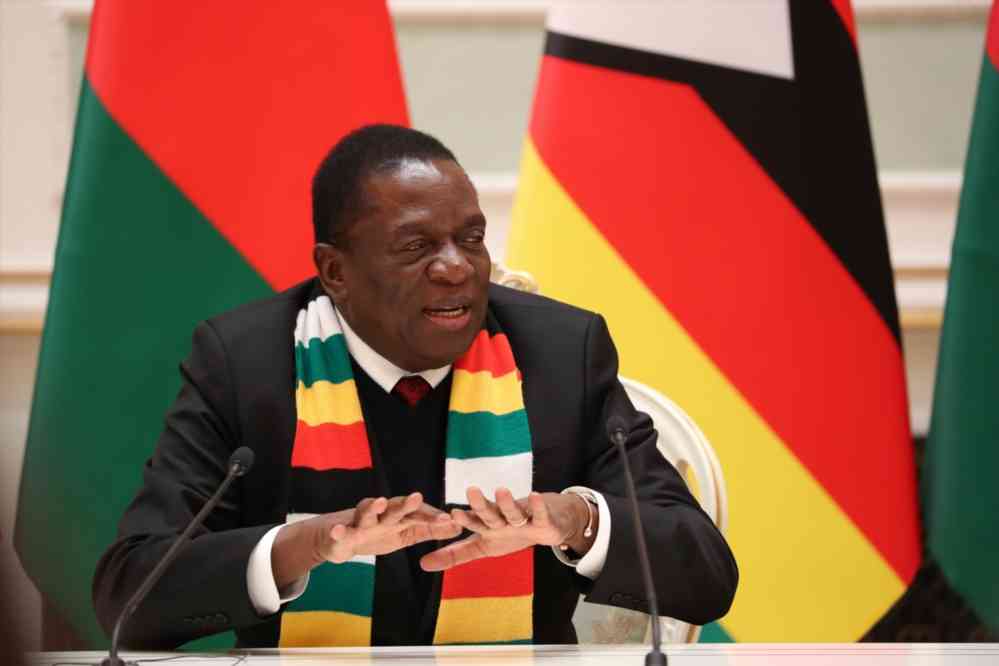
PRESIDENT Emmerson Mnangagwa was yesterday forced to retire Reserve Bank of Zimbabwe (RBZ) governor John Mangudya a month earlier to give his successor room to come up with fresh measures to stabilise the economy.
NewsDay understands that government wants Mangudya’s successor John Mushayavanhu to bring in new ideas to stem a raging economic chaos reminiscent of 2008.
Zimbabweans are grappling with the ever-rising cost of goods and services, while the local currency continues to tumble daily on the parallel market, with some service providers now rejecting it.
“It would not have made sense to allow Mangudya to release a Monetary Policy Statement (MPS) when he will be leaving office in a month’s time,” a source said last night.
“In addition, monetary authorities were under pressure to release the MPS after President Mnangagwa jumped the gun by announcing plans for a structured currency. The announcement caught everyone by surprise.”
The local currency, reintroduced in 2019, has been depreciating sharply amid calls for the redollarisation of the economy.
Mushayavanhu will present the much-awaited MPS next week as he hits the ground running, insiders said.
He will unpack the structured currency seen as a lasting solution to the challenges afflicting the local currency.
- NoViolet Bulawayo’s new novel is an instant Zimbabwean classic
- Jah Prayzah, Zanu PF rekindles ‘lost love’
- Bank workers appeal to Ncube for tax relief
- Indosakusa marks 21-year anniversary milestone
Keep Reading
The Finance ministry yesterday hinted on new measures to buttress the local unit.
In a statement posted on the ministry’s X handle, Finance, Economic Development and Investment Promotion deputy minister Kudakwashe Mnangagwa cautioned Zimbabweans against disposing of the Zimdollar.
“We have been receiving enquiries about the surge in the exchange rate, which right now can be attributed to the anxiety and anticipation of the upcoming Monetary Policy Statement which is around the corner. If I were to irresponsibly give unsolicited advice, I would urge Zimbabweans with their hard-earned ZWL not to hedge against it,” Mnangagwa said.
“Government is committed to ensuring that there will be no loss of value through the introduction of the currency stabilisation measures.”
In a notice published in the Government Gazette yesterday, Finance, Economic Development and Investment Promotion minister Mthuli Ncube said: “It is hereby notified that His Excellency the President has, in terms of section 14 of the Reserve Bank of Zimbabwe Act [Chapter 22:15] appointed John Mushayavanhu as the governor of the Reserve Bank of Zimbabwe for a period of five years beginning on March 28, 2024 and ending on March 27, 2029.”
Mnangagwa appointed Mushayavanhu as Mangudya’s successor in December.
He was supposed to assume office on May 1.
Mangudya’s term was due to end on April 30 after which he would have assumed a new role as Mutapa Investment Fund chief executive officer on May 1.
However, the veteran banker had commenced his new role earlier, necessitating the changes at RBZ, insiders said.
Mushayavanhu’s biggest task will be to stop the rapid depreciation of the Zimdollar, which has been on a free fall that has seen it depreciate by over 250% in just three months.
Last year, the local currency depreciated by over 700%.
Mushayavanhu is a respected banker who was at the helm of FBC Holdings Limited until the end of December.
Mangudya had been at the helm of RBZ since 2014.
Economists, however, remain cautious expressing concerns over government’s ability to deliver on its promises.
Harare-based economist Noah Ngirande said all forecasts for the country paint a picture of doom and gloom with no real prospects of a quick turnaround.
“Zimbabwe has a history of struggling to control inflation,” Ngirande said.
“The success of these new measures will depend on their implementation and the government’s commitment to long-term economic reforms.”
Government has previously introduced a raft of measures to stabilise the local currency without success.
In 2022, Zimbabwe introduced gold coins to mop excess local currency balances, blamed for fuelling the parallel market rate and leading to the rout of the Zimdollar by major currencies such as the United States dollar.
At the time, the Zimdollar was trading at US$1:ZWL$2 000 on the parallel market.
As of yesterday, the parallel market rate was over ZWL$30 000 to one US$1.
Currency depreciation has also led to an increase in prices with annual inflation racing to 55,3% in March from 47,62% in February.
Sources who attended the Zanu PF politburo meeting on Wednesday said runaway inflation was discussed extensively as the ruling party tried to find ways to deal with the weakening of local currency.
Mnangagwa said government was trying to find ways to stabilise the economy and prices.
“My government is determined to implement responsive interventions towards arresting speculative activities, inflation, price increases and stabilising the exchange rate,” he said.
“Equally important, our home-grown innovative solutions and hard honest work remain critical to increasing production and productivity in every sector.”
In 2008, hyperinflation in Zimbabwe peaked to an estimated 500 billion percent resulting in authorities dumping the local currency and adopting a multi-currency regime, a year later.










